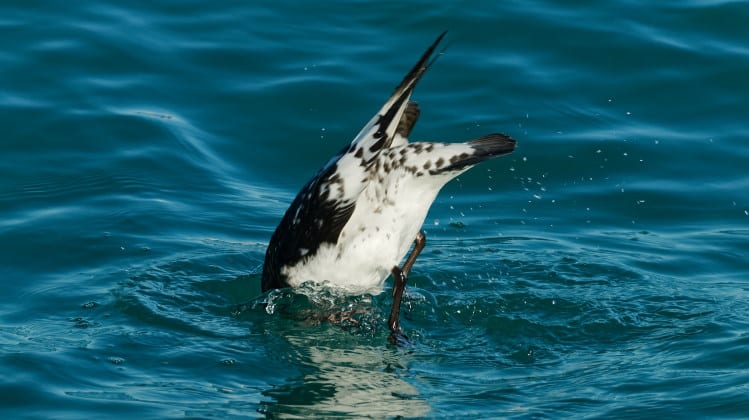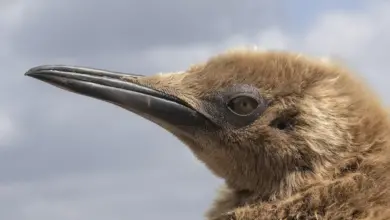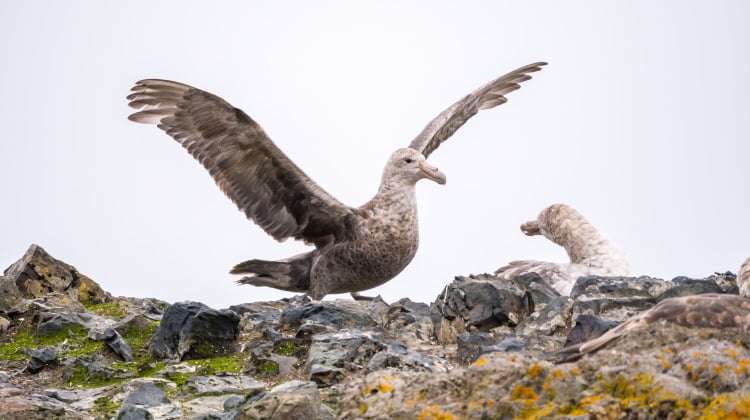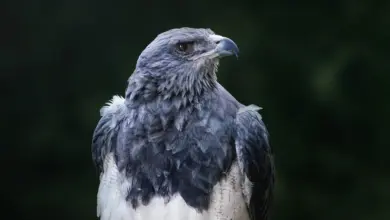What Eats Eagles?
What Eats Eagles? What Do Eagles Eat?
Eagles are large predatory birds that are at the top of the food chain for birds. Eagles are apex-predators with very few natural enemies. They play a vital role in maintaining ecosystems around the world.
Eagles are complex animals, with a complicated relationship to other wildlife. Their diets vary widely between species.
This article will examine what eats eagles and the different eating habits that these majestic birds have.
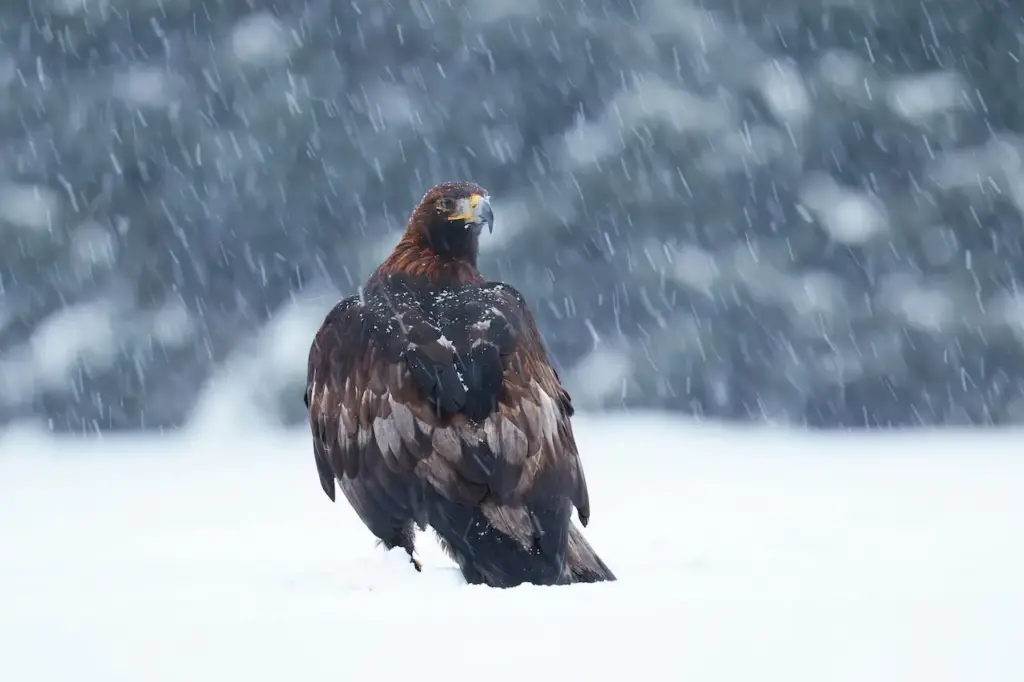
Natural Predators of Eagles
Eagles are the kings of the sky, but they face some threats from land and air predators. Eagles are prey when they’re vulnerable, such as when they’re nestlings or injured or sick. These are the main predators that eagles face:
Other Eagles
The greatest threat to eagles is their own species. The larger eagles will attack the smaller ones, and they’ll also raid nests of each other to steal eggs and chicks.
The Steller’s Sea Eagle, for example, is known to hunt smaller golden eagles. Intruders are fiercely defended by eagles in their territory, but nest raids continue to occur in the wild.
Owls
Some large owls pose a serious threat to eagles. In territorial disputes, Eurasian Eagle Owls and Powerful Owls have been known kill eagle chicks or even adults. They strike at night with the element of surprise due to their silent flight.
Snakes
Snakes eat eggs from eagle nests. The greatest danger comes from large constrictor snakes like black rat, reticulated, and reticulated pythons. Some of them can kill and eat eagle eggs.
Large Carnivorous Mammals
If given the opportunity, predators like wolves and bears will attack flightless chicks as well as injured adults eagles. Felines can climb up cliffs and access eyries.
Humans
In many areas, humans are a threat to eagles. Poachers may hunt them for their feathers or trophies, while farmers kill them to protect their livestock. Many populations are also threatened by habitat loss. Most eagles are protected under law.
What do Eagles eat?
Let’s now look at the eating habits of eagles. Raptors are opportunistic hunters, and their food preferences depend on the habitat, the available food, and the size and species of the eagle.
Fish
Most eagles eat fish, particularly those that live near rivers, lakes, or coastlines. The main food of bald eagles, African fish eagles, and other eagles is fish. They swoop and grab fish from the water using their talons. The Steller’s Sea Eagle is almost exclusively a fish-eating bird.
Waterfowl
Water birds of all kinds are available. The eagles feed on waterfowl, including ducks and swans. They also eat herons. They often use a hit-and run hunting technique, scattering flocks of birds and grabbing a fleeing animal in mid-air.
Carrion
They are opportunistic hunters. They use their amazing eyesight to scan for animal carcasses. Carrion can be anything from dead mammal roadkill to dead fish washed ashore. Vultures and eagles compete for these meals, often ceding the food to larger birds.
Small Mammals
Any small mammal can become prey, including rabbits and hares. Other possibilities include marmots or raccoons. Some large eagles have even been known to attack larger game, including young deer and an antelope.
Other Birds
Many bird species, of all sizes, are prey to eagles. Common targets include gulls, pigeons and doves. Even larger eagles can attack smaller birds of prey like hawks and owls.
Reptiles
Some eagles also eat turtles, lizards, and snakes. The crowned Eagle has a special taste for snakes, especially large ones like rock pythons and cobras.
Insects
Sometimes, invertebrates such as crabs or insects are eaten. It is most common in eagles chicks that are learning to hunt, but it can also happen with certain species.
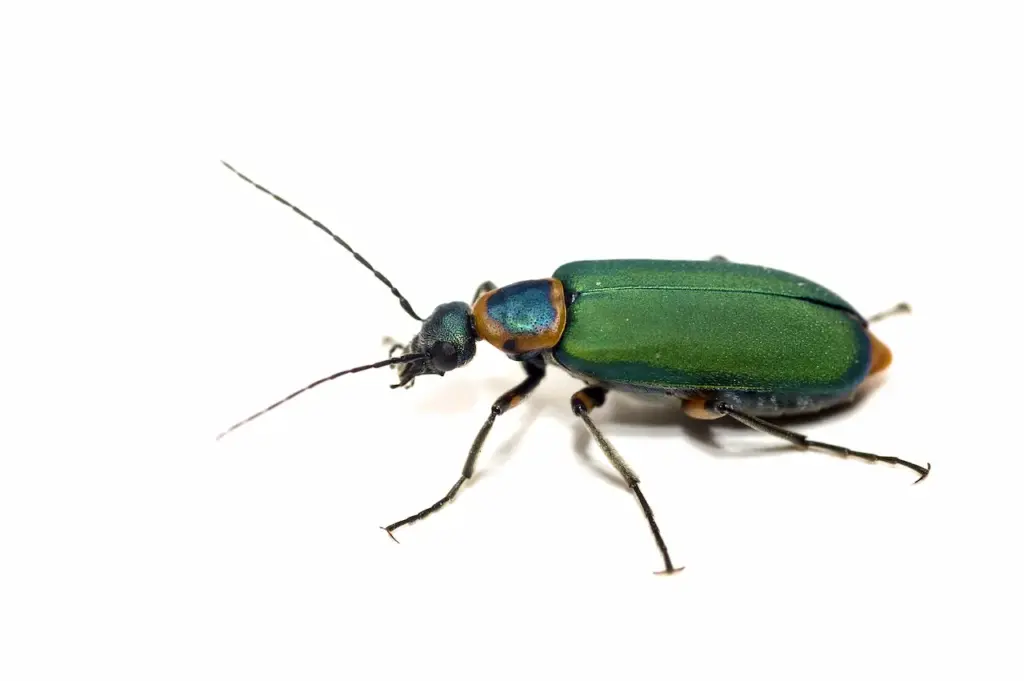
Scavenging
Eagles will happily eat the carcasses of other predators if they can’t capture their prey. Eagles are often able to outwit other predators such as vultures and foxes with their razor-sharp eyesight.
Carrion
As we have already mentioned, eagles are happy to eat roadkill and decaying animal carcasses. When hunting is not productive, these free dead meals are a great way to get calories.
Human Food Waste
Eagles are increasingly feeding on food scraps and human waste in areas such as landfills, fishing docks and urban regions to supplement their natural diet. It can be a source of health issues, but it also makes for easy foraging.
Unique Hunting Strategies
Eagles have evolved specialized hunting behaviors and techniques to catch their prey:
Short Hunting Flights
When prey is seen, eagles will scan the area from a high perch and then quickly descend to hunt. They can hunt with minimal effort by using these short bursts of flight.
Soaring
The eagle is a master at flying on warm air currents. They can scan large areas for food and conserve energy by flying high above.
Still-Hunting
When an eagle perches motionless and watches for prey, this is what it means. When hunting mammals, golden eagles use a perch and swoop method.
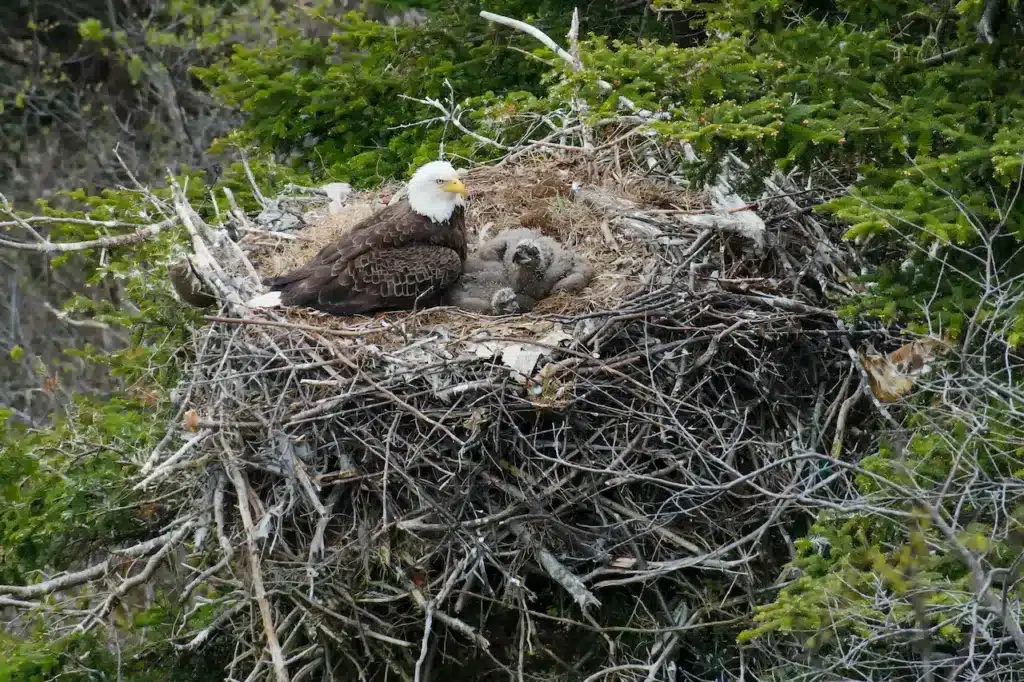
Want to learn more about Eagles? Read: How Big Is A Bald Eagle Nest?
Harrying
When hunting together, eagles can harry or drive prey towards each other. They may also force the animal to move toward obstacles in order to prevent escape. The eagles take turns diving on the animal.
Food Piracy
The practice of stealing food from another bird is common. Eagles can intimidate smaller birds, such as scavengers or raptors, into giving up the food they have worked so hard to earn.
Walking Hunting
Some specialized eagles have a surprising hunting and walking behavior on land. The African crowned Eagle walks in the vegetation to ambush lemurs and monkeys. While the Philippine eagle stalks tree branches to attack lemurs.
Water-Walking
Bald eagles, like sea eagles, will paddle across water to reach fish that have stranded or water birds that are flushed. The oiled feathers of bald eagles and sea eagles allow them to swim at times when they are needed.
Unique Physiological Adaptations
Eagles have developed remarkable physical characteristics that are tailored to their life as aerial hunters.
Keen Vision
The acuity of their vision is legendary. They can spot small prey even from high altitudes. Their large retina contains a dense number of light-sensitive cells that provide phenomenal vision.
Large Wing Size
Eagles can soar effortlessly with their broad wings, utilizing thermal winds and updrafts. Their wings are adapted to their size and hunting environment. The larger wings are better for soaring while the smaller wings allow for more agile forest flight.
Sharp Talons
Eagles are known for their large, curved talons that they use to quickly kill prey while in flight. The largest and most deadly talon on the rear is located at the outermost part. Talons have a gripping force of 500psi.
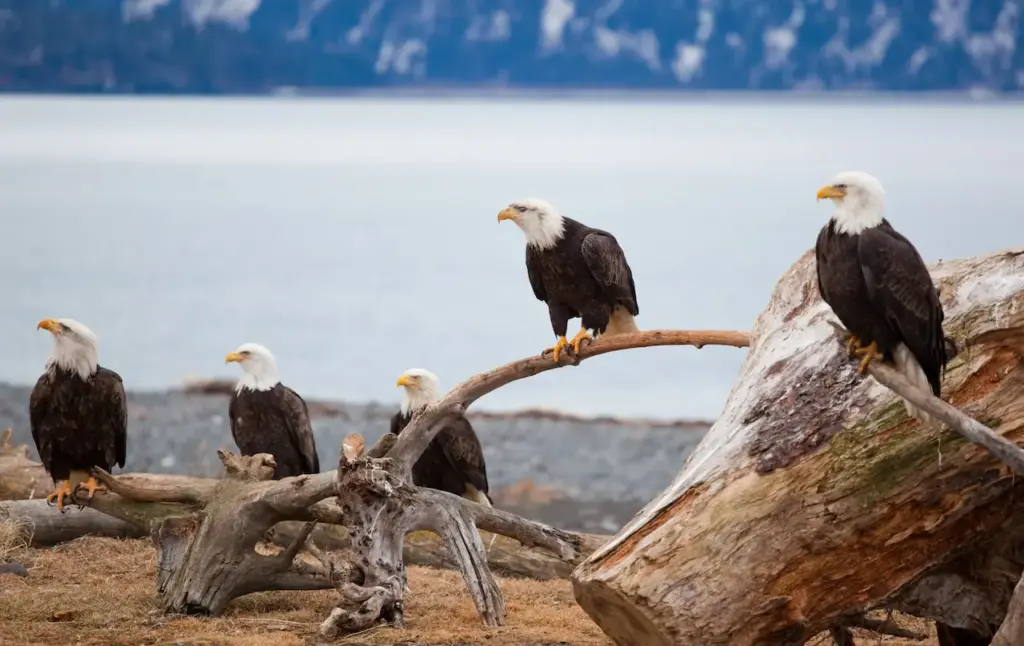
Large Flying Muscles
The massive pectoral muscles and shoulders that drive the wing beats of an eagle can make up to a third of its body weight. They can carry large loads while in flight.
Singles Breeding
A bald eagle is almost exclusively monogamous and mates for life. It is believed that this is due to the high demands of raising young. In order to have enough food, both parents must hunt.
Slow Reproduction
The majority of eagle species only lay 1-3 eggs during the breeding season. Due to their low reproduction rate, eagles are unable to recover quickly from threats like habitat loss and environmental pollutants.
Conclusion
As dominant avian predators, eagles fill a vital ecological niche. They serve as indicator species and help control prey population.
Understanding the complex adaptations to diet and behavior of eagles will help in conservation efforts.
Eagles are formidable hunters but they still face threats due to human activity and climate changes in their ranges around the world.


